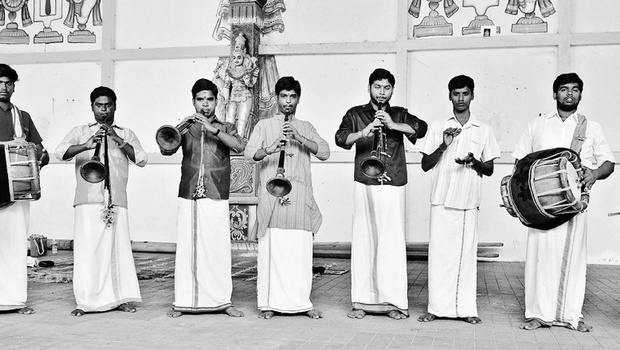
Chennai :
The inseparable couple are truly a marriage made in heaven. You might have heard the couple in almost every Hindu marriage and also during importance functions at temples. No one can miss the sound of the nadaswaram and the thavil. The former especially is not an easy instrument to play. Even years of practice doesn’t guarantee you the correct sound, says M Karthikeyan, a music college student who is also a proficient nadaswaram player.
“When you are playing a flute, which is also a difficult intrument to play, you are not digging deep for air like you are when playing the nadaswaram,” he says.
The sound that is emitted from the instrument, like the air, is also equally deep and resonating. “That might be one of the reasons the instrument is not encouraged too much
at sabhas,” opines Karthikeyan. “For some people it is too loud.”
Another physical hurdle while playing the instrument is holding it for a long times. But that, Karthikeyan says, can be done with practice. “That is why it is important to start early. I joined training when I was seven or eight years old,” he informs. “Also, with several years of training, you have to learn to work with thavil players who always accompany you.”
Catch music college students perform nadaswaram and thavil at the Urur Olcott Kuppam Vizha on February 27, Saturday.
Factoids about Nadaswaram
- The name supposedly comes from the
- it’s snake-like structure (naga). It is
- also attributed to nadam, meaning pleasant sound
- The instrument is made out of a tree called aacha. Nowadays even bamboo is used
- Seevali, the blow piece, is made of a plant called Korukku Thattai
- It is said that king’s court required two things, vedham and nadam
Thavil Facts
- Two different skins — the skin of a goat and the skin of a cow, are used to make the two sides of the thavil
- One side is played with the stick (left) while the other side is played with the hand (right). Jackfruit wood is used for frame
- The stick is made out of the thiruvachi plant, a medicinal plant. Rice paste is used to make koodu, which is worn in the hand
- Mallari is a unique composition played by the nadaswaram along with the thavil
source: http://www.newindianexpress.com / The New Indian Express / Home> Cities> Chennai / by Express Features / February 27th, 2016